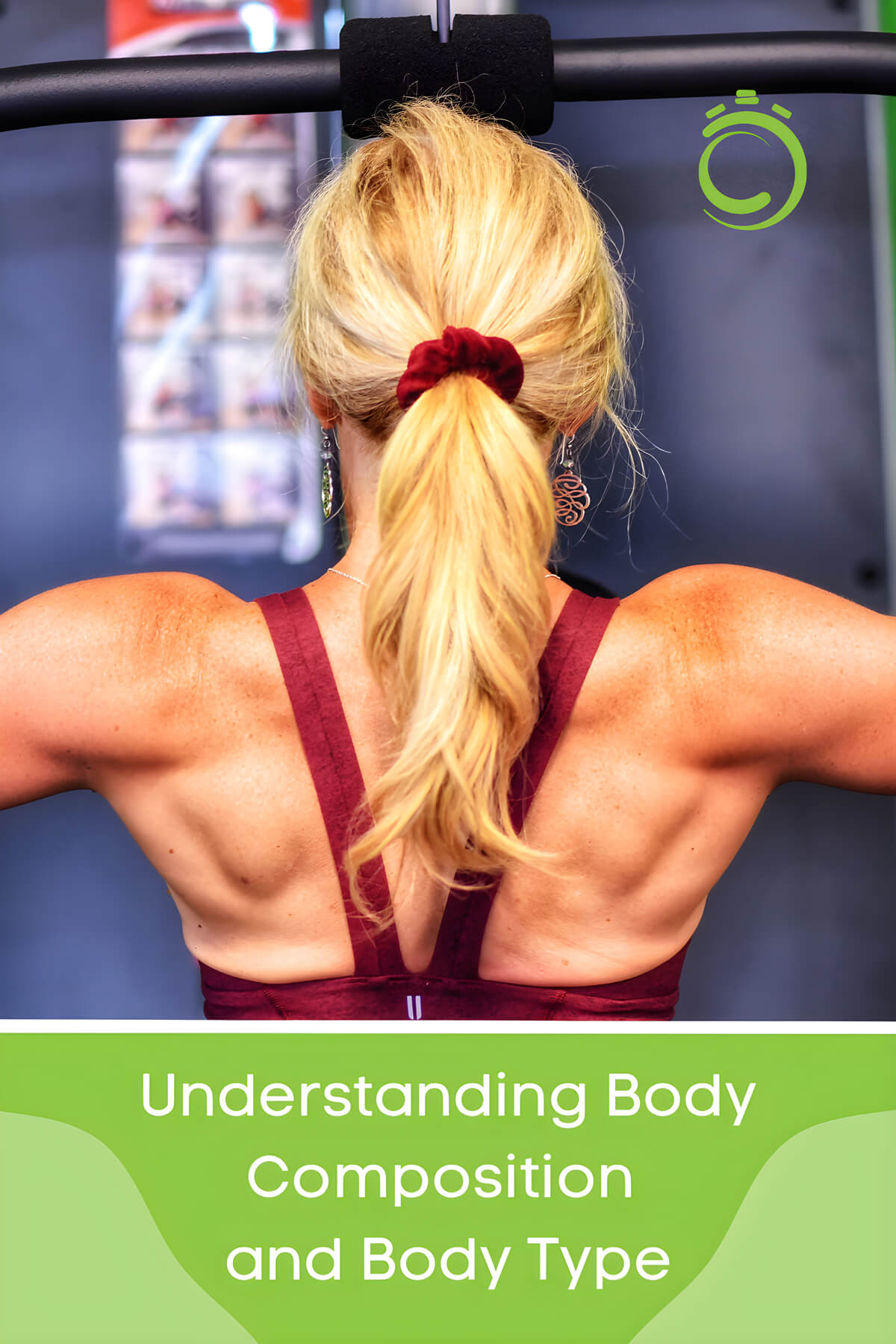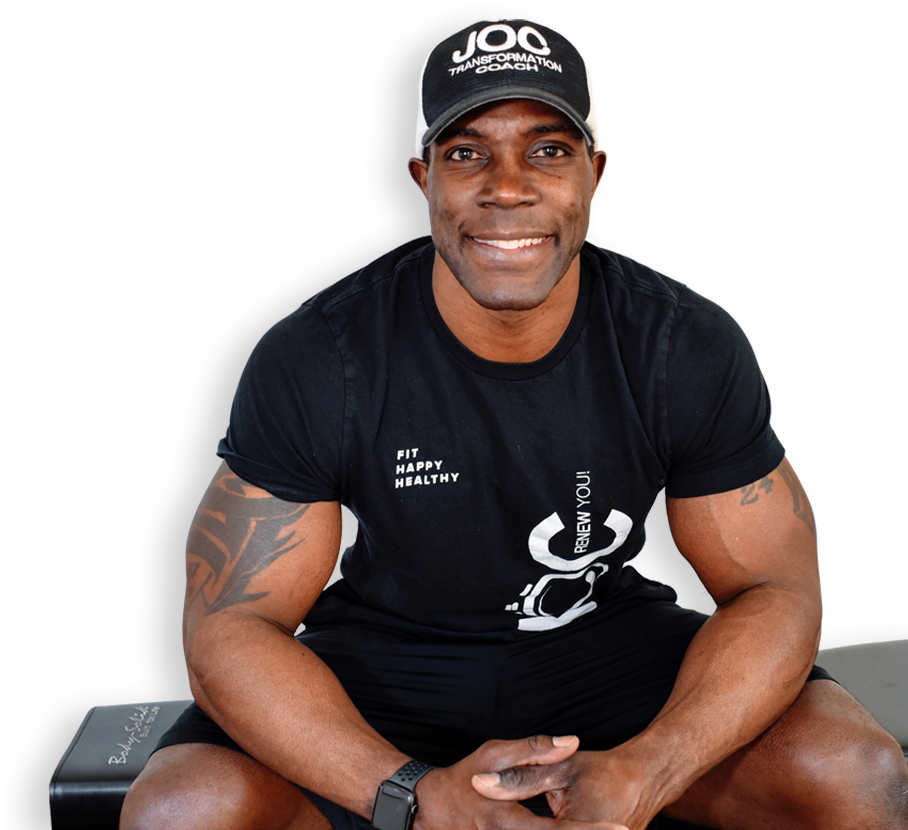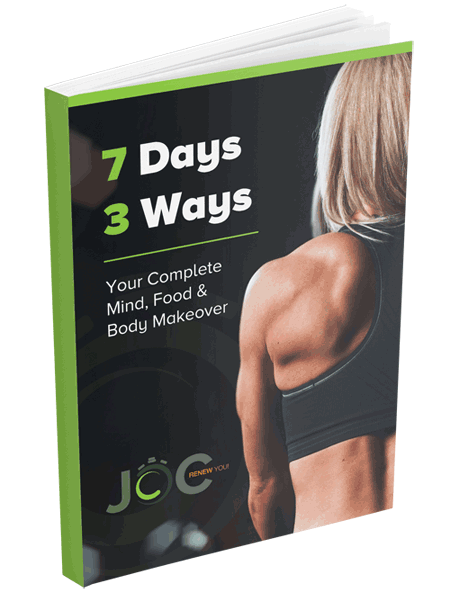You want your body to be an outward representation of the Superwoman you are. There are so many stereotypes about women over their 40s, and the impact of menopause is real, but there are also ways to keep your body strong.
Your body transformation is a powerful physical and mental journey that you can take to get the body you deserve, but most women make a big mistake. A lot of women enter their body transformation with far too much emphasis on the scale.
We get it, it’s important to shed the extra weight and tone up, but weight alone won’t transform your body. It’s critical that you understand body composition and type when embarking on your body transformation journey.
Body Composition

Let’s say you lose your first 5lbs. Congrats! But wait, is that necessarily a good thing? At first, glance, losing weight may seem positive, but you have to consider your body composition. You need to know if the weight you’re losing is fat, muscle, water, minerals, bone, etc. You want to lose fat, but you want to gain and preserve muscle, so weight alone does not tell the entire story.
That’s where body composition comes into play. Body composition includes three key components, which are muscle, fat, and bone. Body composition analysis components are categorized as Lean Body Mass (LBM), which measures your muscle and bone, and Lean Fat Mass (LFM) which measures the fat types on your body.
Not All Fat is Equal

So, the goal is to lose fat, not just “weight”. Perfect, let’s go!
But not so fast! There are also different types of fat. Your body fat is either essential fat or stored fat. Essential fat is, well, essential for carrying out your normal bodily functions. Essential fat is stored in your organs and muscles, in your bone marrow and nervous system. On the other hand, storage fat is stored in all those places you want to eliminate from, your adipose tissue.
The Importance of Body Composition

Not to be the bearer of bad news, but if you base your fitness goals on weight alone, you’re setting up yourself for failure. But don’t worry! Focusing on body composition is the key to a successful body transformation and realistic end results.
Using a body composition analysis to provide the metrics for your physical transformation will help you create an effective end goal. After you know your current body fat percentage, you can set a body fat reduction goal.
Not only will body composition help you determine a realistic end goal, but it will also help you create a realistic timeline. A major frustration many women experience is feeling like their progress is slow or that they are not making progress. When you’re only focused on how much you weigh, this makes total sense. If you add muscle and shed fat, your body composition can change dramatically without your weight changing much or at all.
Body Composition vs BMI

Body mass index or BMI is calculated by dividing your weight by your height. A BMI of 25 to 29.9 is considered overweight. Since BMI relies on total body weight, not just body fat percentage, it’s not an accurate measure of body composition. For example, someone that is short and very muscular could show up as being overweight even if they have normal body fat percentages.
Instead of using BMI to estimate overall health, you’re better off using abdominal fat. Abdominal fat is visceral and linked to a greater risk of type-2 diabetes. Even without a fancy machine, you can estimate abdominal fat by measuring your waist circumference. For women, a waist circumference over 35 inches or more is the cutoff for increased health risk.
Body Types

The human body comes in all shapes and sizes. There are three primary classifications of body types. The first is an ectomorph. Ectomorphs are tall and skinny with small joints and narrow hips. The second body type, mesomorph, is strong, lean, and muscular. Typically, they have a naturally impressive shoulder girdle to hip ratio. Endomorphs, on the other hand, have shorter limbs and more bodyweight. They have wide hips and narrow shoulders.
While there are only three body types or somatotypes, very few people match one 100%. Instead, a rating scale from 1 to 7 is used. You are rated 1 through 7 on each somatotype. A “normal” body type would be a “444”.
Additionally, men and women tend to have different body types. While men tend to store excess body fat around the abdomen, women tend to store it in the butt and hips.
Body Composition and Body Types

Once you have a body type, you’re stuck with it, right? Not so fast! While genetics certainly play a role in our body types, we can still experience physical change. Regardless of your somatotype, you can drastically change your body shape.
How?
By changing your body composition.
That’s right, by intentionally gaining muscle and losing fat, you can greatly alter your “body type” or what your body looks like. There are hundreds of body transformations available to see online; people who have gone from one “body type” to another by changing their body type. Not all “bodybuilder” physiques were born as mesomorphs with a lot of natural muscle.
The Best Tool for Managing Body Composition
Clearly, body composition is the key to your body transformation. Instead of focusing on the scale, you must aim to adjust your body composition and create realistic goals for gaining muscle and losing fat.
To do this accurately and efficiently, you’ll need effective tools. Your average calorie counter won’t do it, you need a detailed, yet simple tool. The JOC Calorie Counter is the best calorie counter available online. Simply enter your basic information into the calculator and find out how many calories you need to reach your body transformation goals.
You can use the calculator to experiment with different goal timelines so you can get a sense of what’s realistic. Check back in with the calculator to examine your progress as you transform your body as well. You can access the JOC Calorie Calculator HERE.





